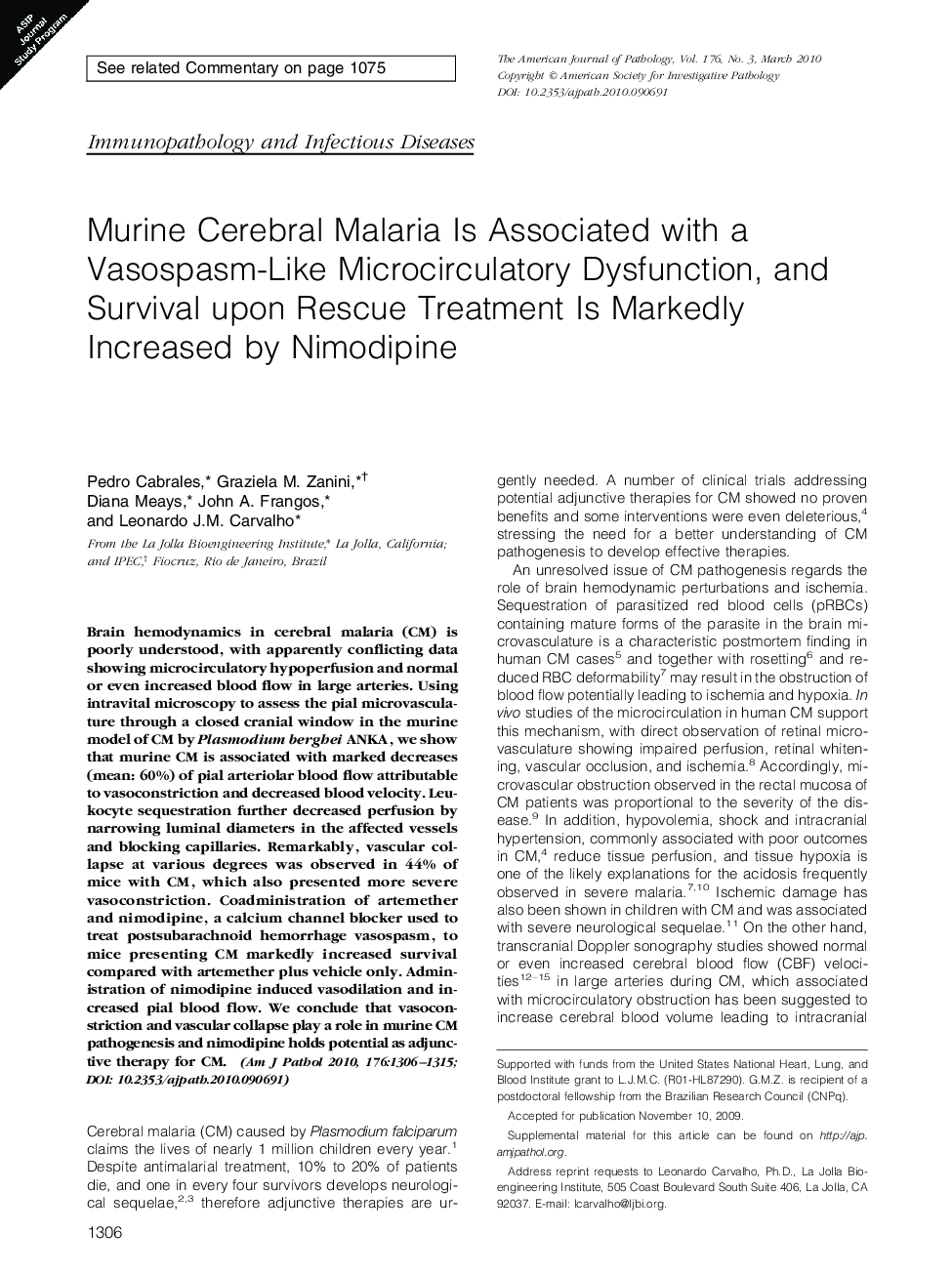| Article ID | Journal | Published Year | Pages | File Type |
|---|---|---|---|---|
| 5936663 | The American Journal of Pathology | 2010 | 10 Pages |
Abstract
Brain hemodynamics in cerebral malaria (CM) is poorly understood, with apparently conflicting data showing microcirculatory hypoperfusion and normal or even increased blood flow in large arteries. Using intravital microscopy to assess the pial microvasculature through a closed cranial window in the murine model of CM by Plasmodium berghei ANKA, we show that murine CM is associated with marked decreases (mean: 60%) of pial arteriolar blood flow attributable to vasoconstriction and decreased blood velocity. Leukocyte sequestration further decreased perfusion by narrowing luminal diameters in the affected vessels and blocking capillaries. Remarkably, vascular collapse at various degrees was observed in 44% of mice with CM, which also presented more severe vasoconstriction. Coadministration of artemether and nimodipine, a calcium channel blocker used to treat postsubarachnoid hemorrhage vasospasm, to mice presenting CM markedly increased survival compared with artemether plus vehicle only. Administration of nimodipine induced vasodilation and increased pial blood flow. We conclude that vasoconstriction and vascular collapse play a role in murine CM pathogenesis and nimodipine holds potential as adjunctive therapy for CM.
Related Topics
Health Sciences
Medicine and Dentistry
Cardiology and Cardiovascular Medicine
Authors
Pedro Cabrales, Graziela M. Zanini, Diana Meays, John A. Frangos, Leonardo J.M. Carvalho,
